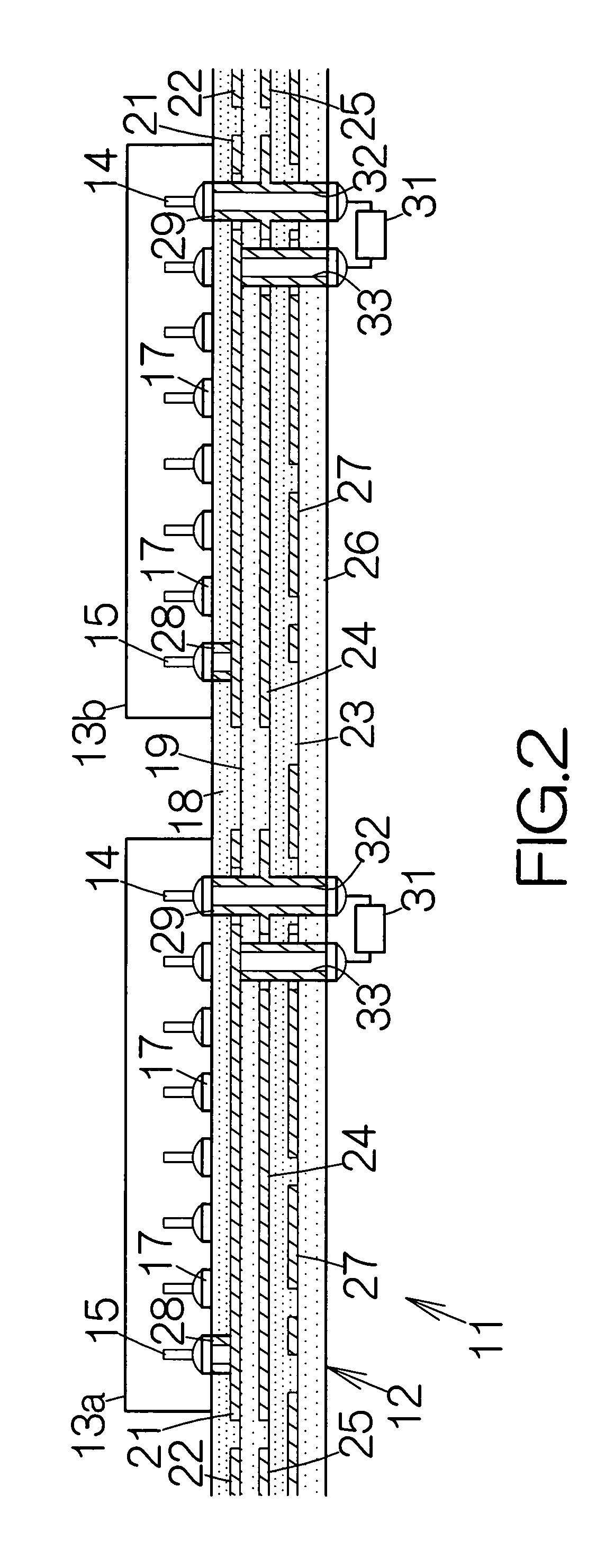Printed wiring board including power supply layer and ground layer
a technology of printed wiring and ground layer, which is applied in the field of printed wiring boards, can solve the problems of forced pass through the electrically-conductive pieces of power supply noise and forced current to force through the electrically-conductive pieces
- Summary
- Abstract
- Description
- Claims
- Application Information
AI Technical Summary
Benefits of technology
Problems solved by technology
Method used
Image
Examples
Embodiment Construction
[0027]FIG. 1 schematically illustrates a printed circuit board unit 11 according to an embodiment of the present invention. The printed circuit board unit 11 includes a printed wiring board 12. One or more LSI (Large-Scale Integrated circuit) chip or chips 13a, 13b, . . . are mounted on the front surface of the printed wiring board 12, for example. A power supply pin 14, a ground pin 15 and signal pins 16 are connected to each of the LSI chips 13a, 13b.
[0028]Wiring patterns 17 are formed on the surface of the printed wiring board 12. The wiring patterns 17 may be made of an electrically-conductive material such as copper, for example. The signal pins 16 are soldered to the corresponding wiring patterns 17, respectively.
[0029]As shown in FIG. 2, the wiring patterns 17 are received on the uppermost layer of the printed wiring board 12, namely the upper surface of a first insulating layer 18. The first insulating layer 18 is received on the upper surface of a second insulating layer 1...
PUM
 Login to View More
Login to View More Abstract
Description
Claims
Application Information
 Login to View More
Login to View More - R&D
- Intellectual Property
- Life Sciences
- Materials
- Tech Scout
- Unparalleled Data Quality
- Higher Quality Content
- 60% Fewer Hallucinations
Browse by: Latest US Patents, China's latest patents, Technical Efficacy Thesaurus, Application Domain, Technology Topic, Popular Technical Reports.
© 2025 PatSnap. All rights reserved.Legal|Privacy policy|Modern Slavery Act Transparency Statement|Sitemap|About US| Contact US: help@patsnap.com



